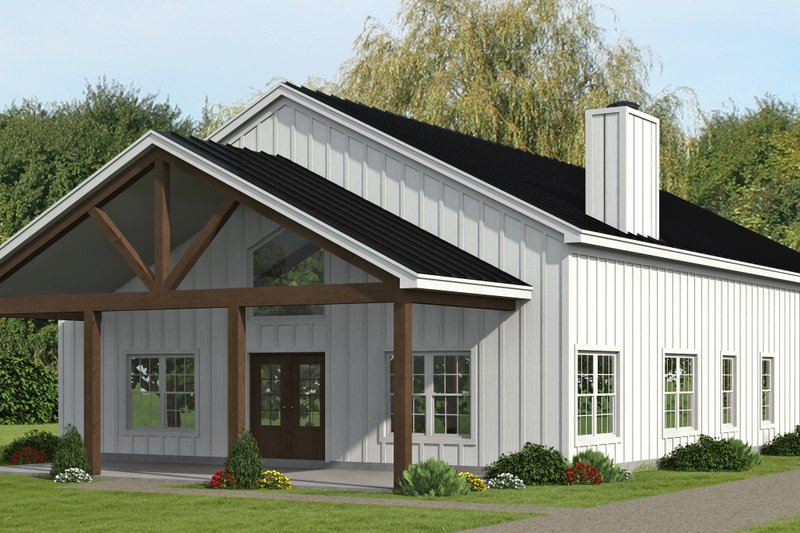Shops with Apartment Plans: Maximizing Space and Functionality

In recent years, the concept of combining commercial spaces with residential living has gained popularity, especially in urban areas where space is at a premium.
A shop with an apartment plan is exactly what it sounds like: a commercial space, such as a retail store or café, combined with a living area, typically located above or behind the business.
This unique blend of business and residence offers various benefits and is becoming a common choice for both entrepreneurs and homeowners.
Let’s explore the advantages, types, design considerations, and key factors to keep in mind when planning a shop with an apartment.
Advantages of Shops with Apartment Plans
One of the main reasons people opt for shops with apartment plans is the efficiency they bring in using space.
The combination of a business and a home offers several compelling advantages:
Versatility: This design maximizes available space by serving dual functions.
The commercial space at the street level can be used for retail, office, or service-oriented businesses, while the apartment space provides a comfortable home above or behind the business.
Additional Income: For business owners, the apartment section can serve as a rental unit or even as the owner's living quarters.
This could offset the costs of owning or renting a commercial property, allowing the owner to generate passive income.
Convenience and Accessibility: A shop with an apartment allows the owner to live above their business, making it easier to manage operations and handle any issues that arise quickly.
There’s also the convenience of not having to commute to work, saving both time and money.
Space Efficiency: In urban areas, where real estate is expensive, this layout allows for better use of limited space.
It combines two essential aspects—living and working—into one building, often resulting in lower overall property costs.
Different Types of Shop and Apartment Combinations
The beauty of shop-apartment plans lies in their adaptability.
Different combinations of commercial and residential spaces can be tailored to various needs:
Small Shop with a Studio or One-Bedroom Apartment: This type is perfect for solo entrepreneurs or small businesses that don’t require much space.
A small retail store on the ground floor can be complemented by a studio or one-bedroom apartment above, ideal for single owners or couples.
Large Shop with Multi-Bedroom Apartments: In high-demand commercial areas, larger shops with multi-bedroom apartments can provide ample living space while offering significant retail area.
These setups are suitable for larger businesses, such as restaurants, boutiques, or offices.
Shop with Office and Apartment Spaces: For professionals such as consultants, photographers, or small business owners who need an office space, the commercial area could serve as a storefront or office, while the upper floors can house apartments for living.
This type of design blends residential and professional needs seamlessly.
Specialized Commercial Spaces: Some shops, like cafés, restaurants, or even beauty salons, may combine their commercial spaces with private residential quarters. For example, a restaurant owner could live above the restaurant, offering convenience and ease of operation while maintaining a healthy work-life balance.
Design Considerations for Shop and Apartment Plans
When designing a shop with an apartment, certain factors must be taken into account to ensure both comfort and functionality. Here are some of the key design considerations:
Floor Plan Flexibility: The layout of both the shop and the apartment must be adaptable to different types of businesses and living needs.
Commercial spaces often require open layouts that are adaptable for product display, customer flow, and storage.
The apartment should be functional and livable, with thoughtful design to create a pleasant home environment.
Privacy and Separation: One of the most crucial design elements is ensuring adequate separation between the commercial and residential spaces.
This could include soundproofing measures and separate entrances to maintain privacy for those living above the business.
Additionally, designing the living area to have its own dedicated access will help minimize disruptions to both residents and customers.
Traffic Flow: The design should accommodate smooth transitions between the commercial and residential areas.
For instance, customers should not interfere with the residential space, and residents should have access to their apartment without needing to go through the business area.
Having separate stairwells or entrances ensures this.
Natural Light and Ventilation: Ensuring that both the shop and apartment areas receive ample natural light and ventilation is essential.
The shop should have large windows to attract customers, while the apartment should be designed for comfort, with plenty of windows to bring in light and fresh air.
Efficient Use of Space: Both the commercial and residential parts of the building must use space efficiently.
For example, small businesses may not need as much storage space, so maximizing display areas for the retail shop is essential.
Similarly, the apartment should be designed with built-in storage solutions to optimize available space.
Best Commercial Types for Shop and Apartment Plans
While almost any type of business could benefit from a combined space, there are certain types that work especially well with this design:
Retail Shops: Small boutiques, convenience stores, or local shops often find this model ideal, as it allows for easy access to customers while providing the owner with living space on the upper floors.
Cafés and Restaurants: Café owners and restaurateurs may prefer to live above their business to keep an eye on operations and provide easier management.
This layout also allows for extended hours, which is often the case with these types of businesses.
Beauty Salons or Barbershops: These types of service-based businesses can benefit from having a shop on the ground floor and an apartment above for ease of commuting and overall convenience.
Small Offices or Studios: Professionals such as accountants, consultants, and artists may prefer living above their offices, especially if they operate a solo business.
This setup combines work and home life while minimizing the commute.
How to Choose the Right Shop and Apartment Plan
When selecting a shop with an apartment plan, it’s important to consider several factors:
Business Type: Choose a layout that suits your business needs, whether you require large display areas, private office space, or more customer-focused areas.
Local Zoning and Building Codes: Make sure the design complies with local zoning laws and building codes.
Different cities and regions may have specific requirements for mixed-use buildings, such as parking requirements, commercial signage, or noise ordinances.
Budget: Shop and apartment plans can vary greatly in cost.
Consider both the construction costs and potential rental income or savings from living above your business.
Always consult with an architect to understand the financial implications.
Long-Term Use: Ensure the plan is adaptable for long-term use.
You may need to modify it if your business expands, or if your living situation changes.
A flexible design will allow you to adjust as your needs evolve.
Conclusion
A shop with an apartment plan is an innovative solution that offers practicality and efficiency for both business owners and residents.
Whether you’re looking to reduce costs, generate passive income, or simply live close to your business, this type of layout provides a variety of benefits.
By carefully considering your business needs, design preferences, and local regulations, you can create a space that works for both living and working.
Whether you're running a small boutique, a café, or a beauty salon, a shop with an apartment plan might just be the perfect solution for you.
FAQ
How much does a 40x60 shop with living quarters cost?
The cost of building a 40x60 shop with living quarters can vary depending on the materials, location, and specific design elements.
On average, the cost can range from $80,000 to $150,000, depending on the complexity of the build and local construction costs.
What are stores with apartments called?
Stores with apartments are often referred to as "mixed-use buildings" or "shop-house" designs.
These structures combine residential living spaces with commercial business areas.
How much does it cost to build a shop with an apartment?
The cost to build a shop with an apartment typically starts around $100 to $200 per square foot, depending on location, materials, and design.
For a 2,000 square foot shop with a small apartment, costs could range from $200,000 to $400,000 or more.
What is a shop with living quarters?
A shop with living quarters is a building that combines commercial space for business use (such as a retail shop or office) with residential living space, often located above or behind the commercial area.
This design offers both a place to live and a place to work in the same structure.
How much does it cost to build a 30x40 shop?
The cost to build a 30x40 shop can vary widely, but the average cost generally falls between $50,000 to $100,000, depending on location, materials, and design complexity.
What is the difference between a barndominium and a shouse?
A barndominium is a barn-style home typically built with metal frames and often used as a combination of living space and storage for agricultural purposes.
A shouse (shop-house) is a building that combines a commercial shop space (like a garage or workshop) with a residential living area.
The main difference lies in the intended purpose of the space, with barndominiums focused on rural living and shouses more commonly used in urban or suburban areas for mixed-use living and business purposes.




